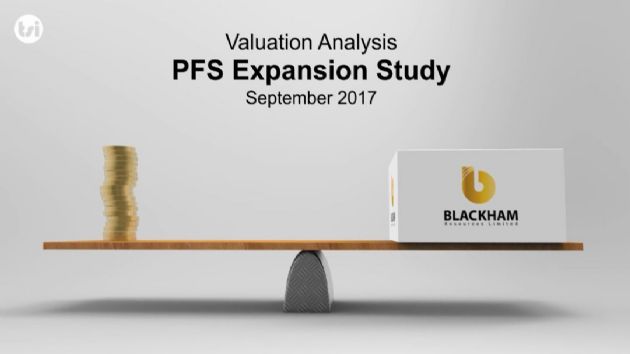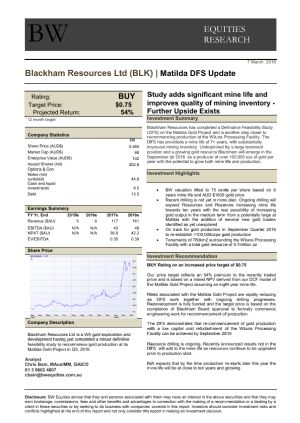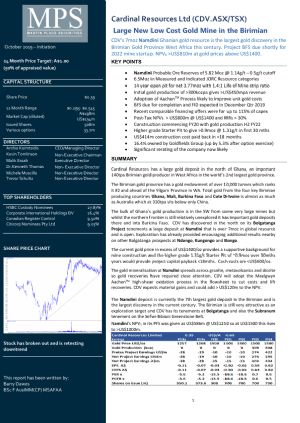Key Points
- Gold prices in important major bull market
- New upleg in its infancy
- US$ now peaking?
- ASX Gold Index up 30% from Dec 2016 lows
- US XAU up 22% from Dec 2016 lows
- Australian gold production set for new highs >314t by 2020
- ASX Gold stocks still very cheap
- A$ and gold stock relationship still robust
- Commodity boom underway
- Global inflation pressures rising
- Dawes Points Gold Stock Portfolios +192% (2 yrs), +78% (1 yr) +6%(2 mths)
- BUY ASX Gold stocks NCM, NST, EVN, SLR, RSG, RRL, BLK, CDV, CYL, TBR, TRM, PNR, AUC and TNR
- Contact me to invest in these and much more; bdawes@mpsecurities.com.au +612 9222 9111
From my perspective, 2016 was a very significant year for gold and it provided a rally from an important low at US$1045 in Dec 2015 that is considered to be the 62% correction low from the 10-12 year bull market high US$1923 in September 2011.
The rally into 2016 reaching US$1377 in July was a 32% rise in just six months but gold gave up 76% of the gain to fall to a low of US$1124 in December.
The rise in gold now to US$1200 in January 2017 is considered to be the next step in this powerful bull market in gold that should run for many years yet.

The long term US$ Gold Price graph here clearly shows 10-12 years (was 1999 or 2001 the real low?) in the first upleg that rose from US$246 to US$1923 (US$1677/oz or 680%) and after the 4 year correction back to US$1045 has again moved higher and has been regaining price.
It is moving up again and is currently flirting with US$1200 but much higher levels are very likely and very soon.
Gold, however, is still now very much oversold medium term and market sentiment had become very negative again so a decent rally is now highly probable.
I also like to view gold from an Elliot Wave Theory point of view to better understand market sentiment. Elliot Wave Theory is an art, not a science, and each practitioner has its own interpretation and many are very experienced and successful. Some are not so good and I don’t regard myself as a true practitioner however I have found that it is probably more useful to just follow the market sentiment aspects of the waves.
To put this in perspective, it is again worth repeating the well known comments from legendary fund manager Sir John Templeton.
`Bull markets start in Pessimism, rise in Scepticism, mature in Optimism and die in Euphoria.’
This sets out the three legs in a typical market that represent
- Disbelief (Scepticism),
- Optimism and
- Euphoria.
In between these legs we have the pull back after Disbelief (Pessimism – yes we told you it was a false rally! And let’s mark all prices down and let’s build up a huge pile of cash!) and then after Optimism is the correction that is the Opportunity to `buy the dips!’ before we all go to Euphoria.
Simple stuff but it is amazing how well it works. Just human sentiment!
When we look at this 10/12 year bull market in gold there was plenty of Pessimism and Scepticism and I can assure you there was not a lot of Optimism in 2008 at the intermediate high and certainly no Euphoria in 2011 at US$1923.
Recall that the Sub Prime problems became obvious in 2007 and I can also assure you immediately thereafter clients lost any Optimism despite gold and oil rising to new highs in 2008. Market breadth shrank as small stocks declined despite strong gains by market leaders. Market participation declined sharply as both large and small investors fled equities.
The US$1923 high was not even confirmed by the gold stocks which had already decided to start heading South. Certainly no Euphoria.
This is where market sentiment is so important.
Earlier Dawes Points highlighted the longer term outlook of the supply and demand for gold where supply made up of mine production and gold scrap was being exceeded by demand for jewellery and bullion from Asia (mostly China and India) and by new central bank purchases. Economic growth in Asia together with rising personal disposal incomes will just keep Asia buying gold for many years yet.
This supply/demand deficit also means the free and readily tradable gold in vaults in the West has been reduced and over the period of the last decade this may be by a significant amount.
This relentless transfer of gold to Asia must eventually result in market tightness for physical gold in the West. It must be expected at some stage that this market tightness will bring about a sharp upmove in gold and bring about the normal rapid price rises that occur in market tightness in commodities. No idea yet on when, but you will certainly notice it when it eventually happens.
The role of COMEX with its `paper’ futures market (with many times gold bought and sold in `paper’ oz for each one oz as registered for delivery in COMEX inventories) certainly seems lop sided and eventually dangerous. COMEX has only 1.946moz of Eligible Gold Inventory and 7.634moz of Registered gold.
These features alone should underpin gold price rises.
In contrast to the gold peaks in 2011, we know most commodities such as oil, the industrial metals and the CRB Index all peaked over 2007-2008. Even platinum did not make a higher high in 2011.
Only gold, silver, copper, tin and a couple of other commodities made higher highs in 2011.
This CRB Index shows the 2008 and a lower high in 2011 then falls to below the 1974 levels in this index (clearly oil and all the metals didn’t reach those sorts of lows so the soft commodities must have had a very rough time!)

This makes gold’s move in 2011 against general commodities, in a deflationary environment and often with a rising US$, very powerful.
The Wave 1 Disbelief to US$1032 was encouraging but the Pessimism was deferred for a couple of years until after a new high at US$1923 that was 90% higher than US$1032! This was a strong move but was never accompanied by Optimism nor Euphoria. Gold stocks peaked in April 2011, nearly six months before gold in September, and many smaller gold stocks hardly rallied at all after 2008 so these highs in September were not `confirmed’ by the broader gold markets. As stated above, no `Euphoria’!
The Pessimism leg saw gold decline 62% to its 2015 low which was actually still 3% above the Wave 1 high in 2008.
So if Wave 2 ended at US$1045 then we are now in the Optimism upleg and have just finished the first correction.

The gold market a truly fascinating arena where so many players have vastly different game plans and each participant has its own perception on it all. Some players are very big and are constantly at the interface between buyers and sellers and others can be small and are coming and going on a whim to buy physical or futures. Is gold just insurance or is it going to be the last asset standing when all the world’s debt leads to a deflationary asset implosion. Or a hyperinflationary inferno as politicians debase their currencies?
Or is gold just really jewellery that stands the test of time?
It is probably all of the above, and a lot more, and it will just depend on how everyone in the market place views it at any one time. And viva la difference!
Whatever the true drivers of gold the market is telling us that it is in a bull market. I have pointed out several times over the past few years that this is a very powerful bull market for gold and I consider it is still in the early stages of a multi decade advance.
The Big Picture is still best provided by the Barrons Gold Mining Index extending back over 75 years to 1939. This is the longest time series I know of for a fair market for gold instruments, especially since gold was fixed under the Gold Standard until 1971.
The low in early 2016 in North American Gold Stocks was extraordinary in a long term perspective with this Index picking up the 1939 uptrend and essentially matching the 1969 highs, the 1982 lows and those in 2000.
The index coming back in 2016 to almost the same low level was not with gold at US$246/oz but at US$1060/oz so certainly suggests an oversold position, on an industry that was producing substantially more gold even if it had paid too much for new capacity, acquisitions and operating costs. And had too much debt.
This is a very powerful market trend as well and supports technical targets far above current levels.

This 2016 US$1045 low was clearly Pessimism writ large and would have technically provided a Wave 2 low in US Gold Stocks. Note as pointed out above that bullion did not confirm these 16 year lows. Gold’s 2015 bottom was at a level 325% higher than the 2000 period lows.
The wave count on the US XAU Philadelphia Gold Index maps the last 16 years very well and heralds the major Wave 3 upleg underway now.

The market sentiment really did ring the bell for us again in December 2016.

So. The next market leg should be up from here and if all the components of supply and demand continue their onward march - no significant increase in gold mine production (outside of Australia – see below), no significant increase in scrap supply (all Aunt Mary’s jewellery has already been sold off) central banks are still buying, Asian demand keeps rising and ETF holdings may increase or decline.
The deficit should still be running and as already pointed out there is a vastly reduced inventory of tradable gold available in the markets.
So Wave 3 should be just as powerful as Wave 1 with its `Irregular b’.
The battle royal between the bulls and the shorters should be fun to watch and if you are on board with the bulls it will be a great ride.
We can start by looking the at Van Eck Gold Stock ETF GDX. Massive volume over the past year as institutional investors recognise the earnings, cashflows and dividends from the sector.

Interestingly, gold and gold stocks have tended to track each other closely over the past six months but this graphic is suggesting to me that gold stocks might be ready to outperform bullion from here.

The bigger picture can again be seen in the US T Bond market.

The 35 year Bull market in bonds is now over for the world. Overpriced, risky issuers and over owned. Currently ready for a rally but the longer term position is not looking good for bond holders or issuers.
And Gold is starting to look very good against the 30 year T Bond index and looks like it will head much higher soon even if bonds also rally from their oversold positions. Interesting!

As noted in Dawes Points #60, a sovereign bond is essentially the currency with a coupon. As the one goes, so does the other. Another observation was that instead of 2017 being a year of a strong US$ it just might prove to be just the opposite. Will this cross trend line put a lid on the US$?

The Australian Gold Sector
The external picture seems to be strongly favourable for gold and here in Australia the market is reacting accordingly.
The gold price in A$ is around A$1,600, which is much the same as the five year average, and is oversold and at the bottom of the uptrend channel. Only one way to go here and that is up!

The ASX XGD Index is up an amazing 30% from the 3345 low in mid December. The low that Dawes Points #59 called at the beginning of December was about 10 days premature but the XGD is still up 13% from that entry point and the 2 Dec 2016 portfolio is up 6.3% to date since then.

The longer term is still for strong action after the 226% rise from the Nov 2014 low. We didn’t quite get the 6000 level I was targeting but a 226% call from 1 Dec 2014 isn’t too bad.

The market correction chart shows an extreme 41% pull back from the 2016 high but that is now only 25%.

Gold stocks are regaining market positioning now with over 4% market share with some recent weeks actually showing >6% market share of All Ordinaries turnover.

And against the A$ gold price the XGD is still cheap.

The Australian Gold Sector operations are doing really well and my projections on Australian gold production are being again upgraded so that we just might see a new high above 1997’s 314 tonnes in gold production by 2020.

The gold industry was badly affected by the decline in the market for gold stocks and exploration expenditures fell over 50% from A$850mpa in mid 2012 to just A$425mpa in mid 2014. It has since climbed over 50% from the lows to almost A$650mpa.
The readjustment of the cost structure has also probably meant that far better value has been achieved for each exploration A$ spent.

Exploration has added to resources for companies like NST, EVN, BLK, SAR and GOR and many discoveries have been made at brownfields and greenfields sites. They might not be front page news but many are of great geological and economic value.
Performances by ASX Gold Stocks
The strong run up in ASX Gold Stocks from Dec 2014 brought about that 226% increase in the XGD to the high in July 2016. The rising market helped most gold stocks but it is interesting to see the performances of stocks after the July highs.
Some have been late starters but some othes have values that were holding up despite the 41% XGD fall.
The leaders NCM, EVN, NST, RRL and OGC have done well but within the XGD stocks SLR, RMS and RSG have shown excellent relative strength and have outperformed.
Amongst the other gold stocks followed and not in the XGD and doing well are CDV, SWJ, PNR and AHK.
This relative strength continued into 2017 with excellent performances by SLR, RMS, RSG, BDL, DCN, SAR and PRU. Amongst the smaller stocks, PNR, BLK and AUC outperformed.
Whether it is new growth stories or bouncing from oversold positions, there are good returns to be made.

The Big Picture also has to bring in the A$.
A declining bond market, rising commodity prices, a global economic boom and rising inflationary pressures means a stronger A$. Export revenues are already picking up and will surge further.
Gold stock investors should not be concerned about a rising A$ because the A$ gold price will be rising so much faster.
This graphic provided a remarkable R2 correlation of 0.92 for the 20 years to 2013 and so where the US gold stocks go so goes the A$. The volatility of the past few years has reduced this to 0.62 but both the A$ and the XAU are rising strongly again.

And this little gem of the A$/US$ with the 100 year downtrend of the A$ against the US$ brings us a great philosophical challenge. What will Australia be like with its currency again above parity with the US$? What sort of world will be out there? Global Economic Boom perhaps?
The volatility in the US$/A$ rate is great but the downtrend is now only US$0.80 and not at the US$0.95 of 2008 and US$0.90 of 2011. The A$ is bouncing back to above AUS$0.75 and so US$0.80 won’t seem too far away.

The evidence is still very strong for substantial gains to be made in gold and gold stocks.
Try to think in big picture terms and gold is the ultimate asset in all scenarios.
The really Big Picture is the US$100tn value in the global bond markets seeking a safer home. The flow from bonds to equities is becoming clearer each week and the next step is to access and tap the A$1870bn in deposits in Australian banking institutions to flow into the economy again and into the Australia equities market.
This flow of capital funds is fundamental to the performance of most of the global markets. US$100tn of bonds and about US$70tn of bank deposits will provide funds for equities, commodities and gold for many years.
Resources commodities are doing well and whether it is gold, silver, copper, oil, LNG, iron ore, coking coal, platinum, lithium, cobalt, uranium, Australian East Coast gas or zinc the pressures are building.
The stars are aligned, the investment opportunities abound and the decision is yours.
This basic resources sector strategy has been consistently and firmly underpinned in these Dawes Points over the past four years and the world is delivering.
Contact me. Call me. Don’t miss out.
Barry Dawes
BSc F AusIMM MSAA
Executive Chairman
Martin Place Securities
|
 Martin Place Securities is Australia's Boutique Resources Investment Firm, specialising in emerging mining, resources and energy companies.
Martin Place Securities is Australia's Boutique Resources Investment Firm, specialising in emerging mining, resources and energy companies.














































